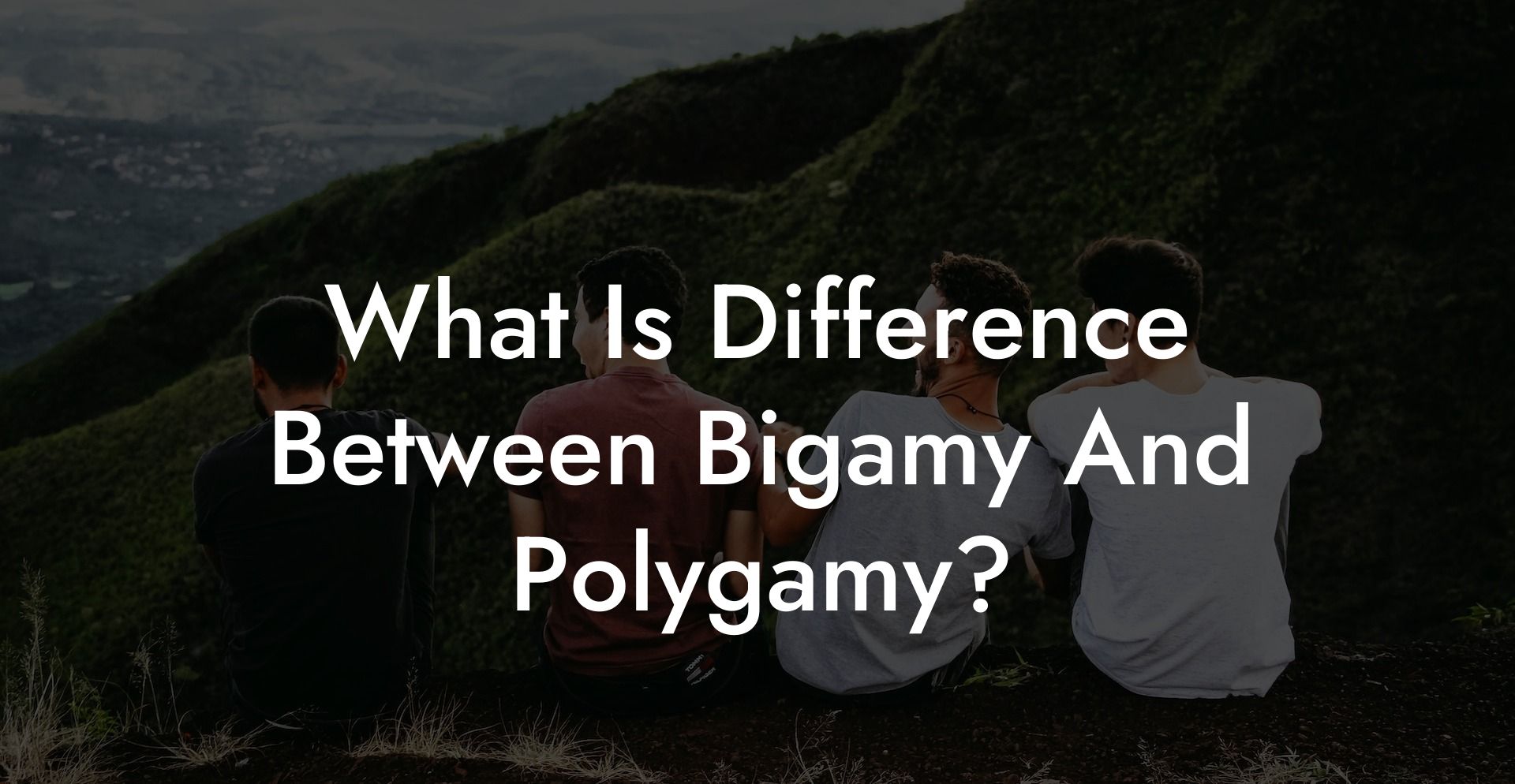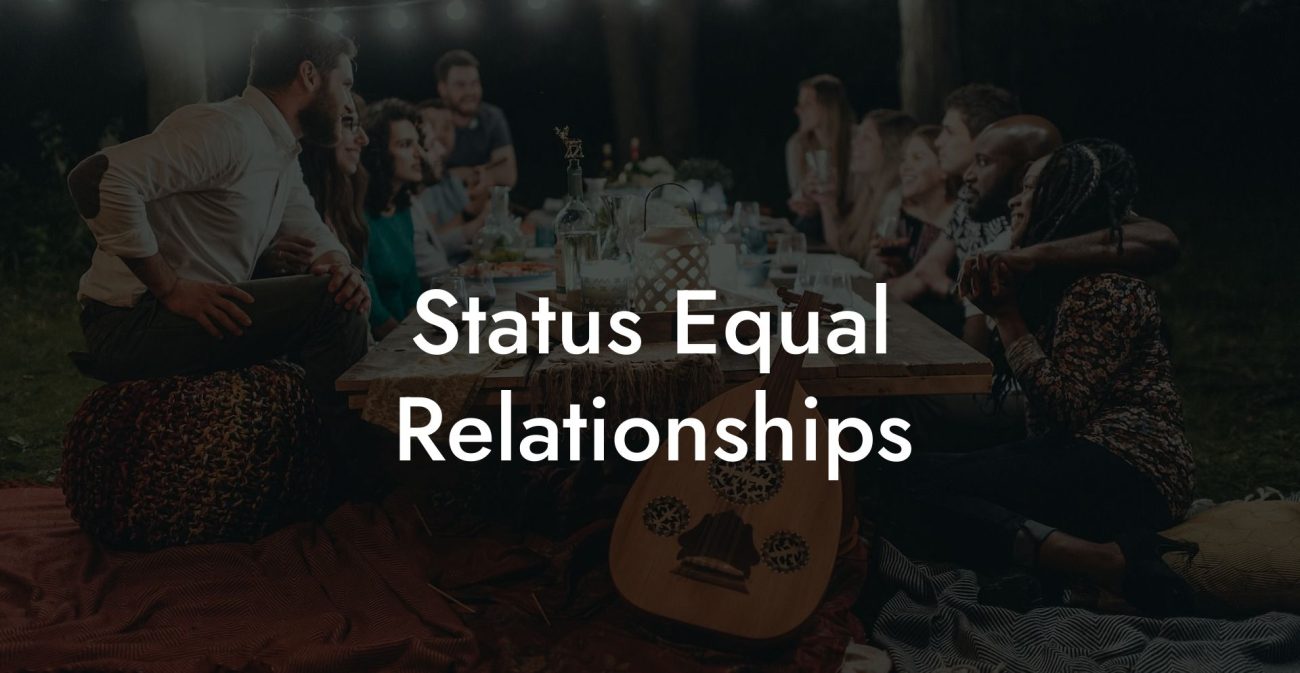Guide to What Is Difference Between Bigamy And Polygamy?

While both bigamy and polygamy involve multiple marital relationships, they are distinct in their definitions, legal status, and social implications. By understanding these differences, you can engage in more informed discussions about alternative forms of relationships.
Quick Links to Useful Sections
- Understanding the Terms
- What Is Polygamy?
- What Is Bigamy?
- Key Differences Between Bigamy and Polygamy
- Legal Status
- Cultural and Historical Context
- consent and Structure
- Historical and Legal Context
- Historical Roots of Polygamy
- Legal Implications of Bigamy
- FAQ: Your What Does Another Name For Polygamy Questions Answered
Understanding the Terms
What Is Polygamy?
Polygamy is the practice of having more than one spouse simultaneously. It typically refers to plural marriages that are culturally, religiously, or traditionally sanctioned. The most common forms of polygamy are:
- Polygyny: One man married to multiple women.
- Polyandry: One woman married to multiple men.
In many societies, polygamy has historical roots and has been practiced as a means of strengthening family bonds, increasing social status, and managing economic resources. In some cultures, plural marriages are accepted and even celebrated.
What Is Bigamy?
Bigamy is the act of entering into a marriage with one person while still legally married to another. It is a legal term and, in most jurisdictions, it is considered a criminal offense. Bigamy typically occurs when a person does not legally dissolve an existing marriage before marrying someone else.
Unlike polygamy, which can be part of a culturally accepted practice in some regions, bigamy is generally defined by its illegality within modern legal systems.
Key Differences Between Bigamy and Polygamy
Legal Status
Bigamy: Bigamy is illegal in virtually all modern legal systems. It involves the act of marrying another person without legally ending a previous marriage, and it is subject to criminal prosecution.
Polygamy: Polygamy, particularly in the form of plural marriage, is also illegal in many Western countries; however, it may be legally recognized in certain cultures or regions under religious or customary law. In societies where polygamy is practiced, it is often a culturally sanctioned institution rather than a criminal act.
Cultural and Historical Context
Polygamy has a long history in various parts of the world and has been integrated into the social, economic, and religious fabric of many societies. It is often viewed through the lens of tradition and cultural heritage.
Bigamy, on the other hand, is generally not viewed as a traditional practice but rather as a legal violation when someone unlawfully enters into a second marriage. The stigma associated with bigamy is primarily legal rather than cultural.
consent and Structure
In polygamous relationships, the multiple marriages are typically entered into with the consent of all parties and are often part of a recognized social or religious structure. There is usually an established hierarchy or system in place.
Bigamy lacks this consensual, structured framework because it involves secret or unlawful marriages. It is not considered an ethical or mutually agreed-upon practice but rather a breach of legal and marital contracts.
Historical and Legal Context
Historical Roots of Polygamy
Polygamy has been practiced in many ancient societies as a means of building alliances, managing resources, and enhancing social status. Religious texts and cultural traditions in regions such as Africa, the Middle East, and Asia have long included plural marriage as an accepted practice.
Legal Implications of Bigamy
Bigamy is strictly defined and prosecuted by modern legal systems. The act of marrying another person while still legally married to someone else violates legal marriage contracts and is subject to penalties including fines and imprisonment.
FAQ: Your What Does Another Name For Polygamy Questions Answered
1. What does "polygamous" mean?
"Polygamous" refers to the practice of having more than one spouse simultaneously. It is commonly used to describe plural marriages, such as polygyny (one man with multiple wives) or polyandry (one woman with multiple husbands).
2. How is bigamy different from polygamy?
Bigamy is the act of marrying someone while still legally married to another person, making it illegal in most jurisdictions. Polygamy, on the other hand, involves multiple marriages that are part of a cultural or religious practice, even though it is also illegal in many Western countries.
3. Why is polygamy sometimes called plural marriage?
The term "plural marriage" is often used as a synonym for polygamy because it emphasizes the existence of multiple marital bonds within a single relationship framework. This term is frequently used in academic and cultural discussions to describe the practice neutrally.
4. Is bigamy ever considered acceptable?
In most modern legal systems, bigamy is considered a criminal offense and is not acceptable. It lacks the mutual consent and structured framework that might characterize culturally accepted forms of polygamy.
5. Can polygamy be legally recognized?
In many Western countries, polygamous marriages are not legally recognized. However, in certain regions and cultures where plural marriage is a long-standing tradition, it may be accepted under customary or religious law.
Resources and Community Support: Your Next Steps
- "The Ethical Slut" by Dossie Easton & Janet Hardy – A seminal work on alternative relationship models that provides valuable insights into the ethics and practices of non-monogamy.
- "More Than Two" by Franklin Veaux & Eve Rickert – A comprehensive guide offering practical advice on managing multiple relationships and understanding plural marriage.
- Podcasts: Listen to "Multiamory" and "Polyamory Weekly" for engaging discussions on alternative relationship dynamics and the evolution of marriage models.
- Online Communities: Engage with forums such as r/polyamory and other social media groups dedicated to discussing alternative relationship structures.
- Workshops and Seminars: Attend events focused on ethical non-monogamy and relationship sociology to expand your knowledge and connect with like-minded individuals.
By exploring these resources and applying the insights outlined in this guide, you can develop a clear and informed understanding of what is meant by polygamy and how it differs from bigamy. Embrace continuous learning, open dialogue, and self-reflection as you navigate discussions about alternative relationship models.
Lost & confused by all of the terms, types and seemingly made up 3 letter acronyms?? We've got you. Check out our Ethnical Non-Monogamy Dictionary >>
Useful Interruption: Not sure which relationship vibe fits you best? Take our Relationship Test, it’ll give you the real insight into your natural relationship style. Then, dive into our binge-worthy guides (from the tried-and-true to the “wait, that’s a thing?”) and find the perfect relationship type for your life:
- Monogamy
- Open Relationships
- Ethical Non-Monogamy
- Solo Polyamory
- Non-Hierarchical Polyamory
- Hierarchical Polyamory
- Relationship Anarchy
- Swinging
Now back to the main article but yeah take the test...












